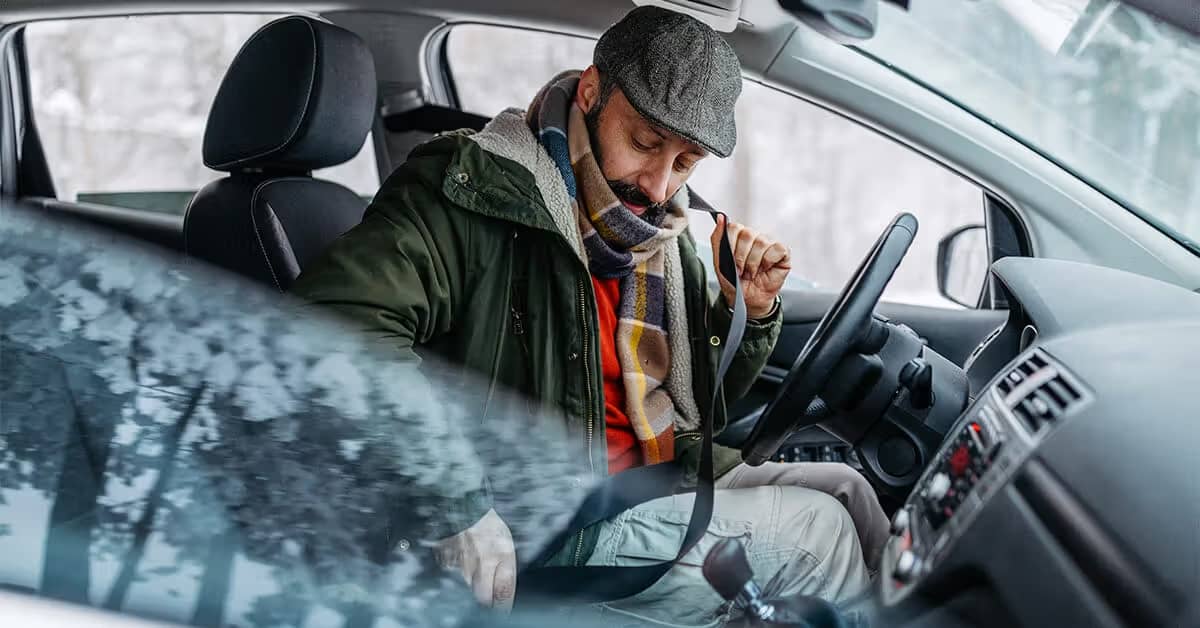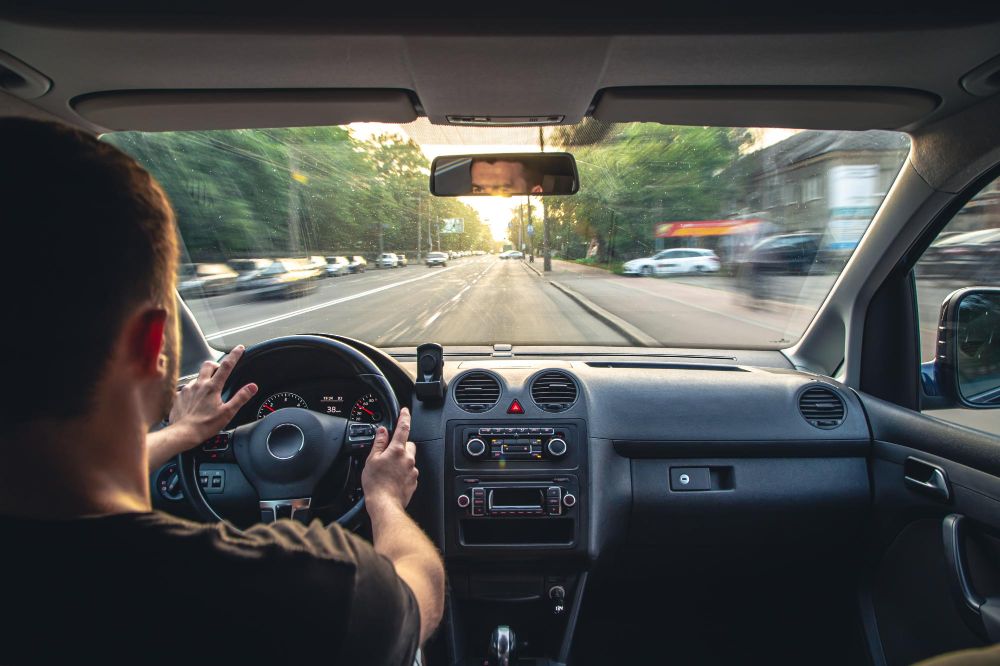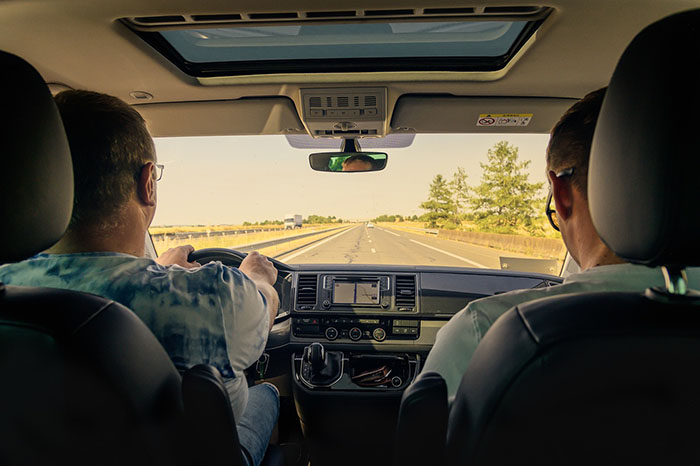
How to Overcome the Fear of Driving: Practical Tips and Exercises
Дата:
Категорія:
Переглядів:
11.02.25
News
37
Not long ago, you imagined that after finishing driving school and getting your license, you would finally be able to drive wherever you wanted. But reality turned out to be completely different: driving on your own causes fear and uncertainty.
If you think this is only your problem, don’t worry. According to statistics, nearly 90% of beginner drivers have experienced the same concerns. But the good news is that most of them managed to overcome their fear — and you can do it too!

The most important thing is to understand what exactly scares you: lack of confidence in your driving skills, fear of other drivers, or the unpredictability of the road. Experts at ALIN will help you identify the cause of your driving fear and suggest effective methods to overcome it.
The Main Fears of Beginner Drivers and How to Overcome Them
The only way to overcome uncertainty behind the wheel is through consistent practice. The sooner you start driving, the faster fear will give way to confidence. The key is not to dwell on anxious thoughts but to take action.
How can you stop being afraid of driving? Look at the flow of cars during rush hour. The drivers who maneuver calmly once felt just as nervous behind the wheel as you do now. But they managed to conquer their fear — and so can you!
Do not delay driving after getting your license. The longer you wait, the more your uncertainty grows, and the skills you acquired in driving school gradually fade. Get behind the wheel while your knowledge is still fresh and gradually get used to driving on your own.

Let’s take a look at the most common fears of beginner drivers and how to overcome them.
1. Fear of Losing Control of the Car
Do you feel like the car might get out of control and you won’t be able to stop it? That’s normal. Confidence will come once you get used to your car and understand its dimensions.
We recommend:
- Before driving, check the condition of your car: fuel level, oil, brake fluid, and tire pressure. Knowing that everything is in order will help you feel calmer.
- Before starting the car, take your time to adjust the seat and mirrors, fasten your seatbelt, and check the gear position (neutral/"P" mode). This will help you develop confidence in your actions.
- Remember: a properly functioning car obeys the driver. If the vehicle is in good condition, there is nothing to fear.

2. Lack of Confidence in Traffic Rules Knowledge
Many beginners worry that they might misinterpret road signs or markings. But the solution is simple—practice.
- Read the traffic rules multiple times and reinforce your knowledge while driving.
- Observe road signs and pay attention to how other drivers react to them.
- Avoid distractions: do not talk on the phone, do not listen to loud music, and do not look into other cars.
- If you have received your license, it means your knowledge level is sufficient. Refresh your knowledge periodically by reviewing key rules and practicing at a comfortable pace.
3. Fear of an Accident
If you have witnessed an accident, been in one, or heard frightening stories about road incidents, the fear of driving can be overwhelming. However, there is no shame in these feelings—it’s a natural reaction linked to self-preservation.
Try to gradually regain your confidence:
- Start by simply sitting in the driver’s seat, getting comfortable with it.
- Keep yourself occupied with small tasks—clean the interior, adjust the mirrors, and enjoy being a car owner.
- Next, take a few short drives around your neighborhood.
- Gradually increase the distance and complexity of your routes to confidently adapt to different road conditions.
The key is not to dwell on negative thoughts. Focus on the fact that you are in control, and everything will be fine.

4. Fear of the Police
Many beginner drivers feel anxious when they see a police car. They worry that they will be stopped and fined.
To overcome this fear, follow these simple rules:
- Do not violate traffic rules—if you drive correctly, there is nothing to worry about.
- Know your rights as a driver: you have the right to know the reason for a stop, request to see the officer’s badge, and record the conversation on video. This will help you feel more confident and calm around the police.
Over time, this fear will fade when you realize that the police are not your enemy—they are just doing their job.
5. Fear of Driving in Heavy Traffic
If you feel comfortable driving on empty roads but panic at the thought of busy city traffic, that’s completely normal. Many beginner drivers fear the congestion, high speeds, and potential mistakes.
Here’s how to overcome this fear:
- Start by choosing complex routes during times of minimal traffic (early morning, late night). This will help you get used to the road without stress.
- Memorize routes: the better you know the way, the less you’ll worry.
- Remember that every driver on the road is just as interested in safety as you are. Nobody wants an accident.
Over time, you’ll learn to navigate even in dense traffic with ease.
6. Fear of Being Judged by Experienced Drivers
Many beginners worry that other drivers will notice their lack of confidence and respond with honking or frustration.
To overcome this feeling:
- Remember that every driver was once a beginner.
- Ignore emotional signals from other drivers—they don’t define your skills.
- Your main priority is safety, not other people’s opinions.
Those who impatiently honk or make rude comments were once in your shoes. Your goal is to drive confidently and safely, not to compete with experienced drivers.

Exercises for Beginners to Overcome Driving Fear
Exercise #1: "Tension and Relaxation"
To quickly release tension, try this simple exercise:
1. Tense your entire body as much as possible, hold this state, and count to 10 while focusing on the sensation of tension.
2. At the count of 10, release all tension, lean back, and take a deep, calm exhale.
3. Sit quietly for a minute, paying attention to how your muscles relax and how the tension gradually fades.
Repeat this exercise 7–10 times a day until you learn to control your body without unnecessary tension. This usually takes 5 to 10 days.
Exercise #2: "Rhythmic Breathing"
Fear and breath-holding are closely connected. The body perceives a lack of oxygen as a threat, which increases anxiety. This creates a vicious cycle: fear → breath-holding → even more fear.
To break this cycle, try this breathing technique:
1. Inhale deeply through your nose (4 seconds).
2. Hold your breath (4 seconds).
3. Exhale slowly through your mouth (8 seconds).
Repeat for 2–3 minutes. This will help relieve tension, stabilize your heart rate, and calm your nervous system.
Exercise #3: "Awareness and Sensation"
Before setting off on a drive, learn to feel the space around you and your own body.
1. Hearing: Sit in your car, close your eyes, and focus on all the sounds around you. Then try to "hear the silence"—let the external noises fade into the background.
2. Body: Feel how your feet rest on the car mat, how your back touches the seat, and how your hands grip the steering wheel.
3. Vision: Open your eyes and don’t just look at objects—try to be aware of the space they occupy.

Before driving, your main goal is to bring your body and mind into a calm, relaxed state to keep your fear under control. Only then should you hit the road!

If driving on your own still feels more stressful than exciting, take your time! Rent a car with a driver —observe how they confidently navigate traffic and absorb their calmness. This is a great way to adapt without pressure and get behind the wheel with more confidence when you’re ready.
